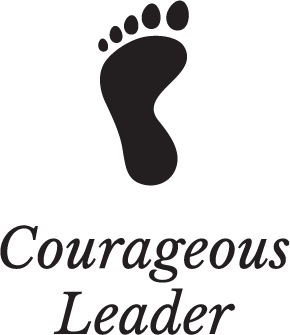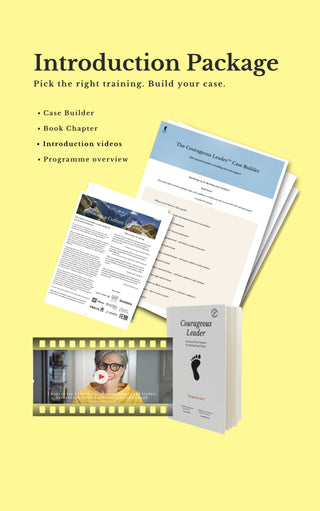Building a solid and efficient team is essential for achieving business success and effectively managing change. This article outlines nine critical steps to help leaders and managers create a cohesive team adaptable to change.
Read on to discover practical strategies to implement immediately to foster a team environment where collaboration, productivity, and innovation thrive.
1. Define Clear Goals and Expectations
Establish a Vision
The first step in building a solid team involves setting clear, achievable goals. This aligns with the fundamental principles of change management, ensuring every team member knows what is expected of them. These objectives must be communicated effectively, enabling the team to achieve a common goal.
Specific, measurable, attainable, relevant, and time-bound (SMART) goals encourage team members to focus their efforts and understand their contributions to the team's success.
Foster an Environment of Accountability
Creating an environment where team members hold each other accountable for their tasks and responsibilities is vital. This enhances productivity and builds mutual respect and trust among team members. Accountability ensures that goals are met on time and to the required standard, which is essential for successful change management.
2. Select the Right Team Members
Identify Complementary Skills
Selecting team members based on complementary skills and personalities is crucial for building a solid team. This diversity fosters creativity and innovation, allowing for a broader range of ideas and solutions. In the context of change management, it's crucial to have a mix of skills to adapt to new challenges and requirements.
Value Soft Skills
While technical abilities are necessary, soft skills such as communication, teamwork, and problem-solving are equally crucial. Team members who can navigate interpersonal dynamics effectively contribute to a positive and productive team environment.
3. Promote Open Communication
Encourage Transparency
Open communication is a cornerstone of effective change management. Encouraging team members to share their thoughts, feedback, and concerns openly can prevent misunderstandings and build trust. This transparency ensures that everyone is on the same page and can adapt to changes more efficiently.
Utilize Multiple Communication Channels
Leveraging various communication tools can facilitate more effective interactions among team members. Whether through meetings, email, or collaboration platforms, providing multiple avenues for communication ensures that all team members can contribute and stay informed.
4. Foster Team Cohesion
Encourage Team Team-building Activities
Team building activities are an excellent way to strengthen relationships and foster cohesion within the team. These activities can range from simple icebreaker exercises to more complex problem-solving challenges. They help team members understand each other's strengths and weaknesses, crucial for effective collaboration and change management.
Promote a Culture of Respect
Respect among team members is essential for a healthy team environment. Encouraging mutual respect helps to create a supportive atmosphere where everyone feels valued and motivated to contribute their best.
5. Provide Regular Feedback and Recognition
Offer Constructive Feedback
Regular feedback is vital to personal and team growth. Providing constructive feedback helps team members understand their areas for improvement and how they can contribute more effectively to the team's goals. In change management, feedback is critical as it helps individuals adapt to new roles or processes.
Recognize Achievements
Recognizing and celebrating the team's achievements fosters a sense of accomplishment and motivates team members to continue performing at their best. Whether it's through formal awards or simple acknowledgments in team meetings, recognition is a powerful tool for building a solid team.
6. Encourage Continuous Learning
Promote Skill Development
Investing in team members' continuous learning and development enhances their capabilities and benefits the team and organization. This commitment to growth is essential in change management, where teams must constantly adapt to new technologies, methodologies, and market conditions.
Foster a Culture of Innovation
Encouraging a culture where innovation is valued and rewarded ensures that the team remains competitive and adaptable. Innovation drives efficiency and productivity, critical components of a strong team.
7. Lead by Example
Demonstrate Leadership Qualities
Leaders play a crucial role in setting the tone for the team. Demonstrating qualities such as integrity, commitment, and empathy inspires team members to emulate these behaviors. In the context of change management, strong leadership is essential for guiding the team through transitions and challenges.
Be Open to Feedback
Leaders should also be open to receiving feedback from their teams. This openness encourages a culture of continuous improvement and mutual respect.
8. Manage Conflict Effectively
Address Issues Promptly
Conflict is inevitable in any team, but how it's managed can significantly impact team cohesion and efficiency. Addressing issues promptly and constructively ensures that disputes do not escalate and become detrimental to the team's dynamics. Effective conflict management is a critical component of change management, as it helps maintain team unity during periods of uncertainty.
Encourage Solution-Focused Approaches
Fostering an environment where team members feel comfortable discussing conflicts and working together to find solutions promotes a healthy, collaborative team culture.
9. Adapt to Change
Embrace Flexibility
A strong team can effectively adapt to change. Encouraging flexibility and resilience among team members ensures that the team can navigate challenges and embrace new opportunities with confidence. This adaptability is crucial for successful change management, allowing the team to remain effective even in the face of uncertainty.
Continuously Evaluate and Adjust Strategies
Regularly assessing team strategies and processes allows for continuous improvement. Being open to change and willing to adjust strategy ensures that the team remains aligned with organizational goals and responsive to new developments.
Conclusion: Solidifying Your Team for Success
Building a solid and efficient team is an ongoing process that requires commitment, leadership, and a willingness to adapt. By following these nine steps, leaders can create an environment where team members feel valued, engaged, and motivated to achieve their best. Remember, a strong team is the foundation of any successful organization, especially in the face of change management.
We invite you to engage further by commenting on this post, sharing it with your network, or exploring the related services we offer. Your insights and experiences can enrich our community and contribute to the collective success of all our teams. Let's continue to grow together and build teams that are not only strong and efficient but also resilient and innovative.
Read More:
Effective Management Techniques


